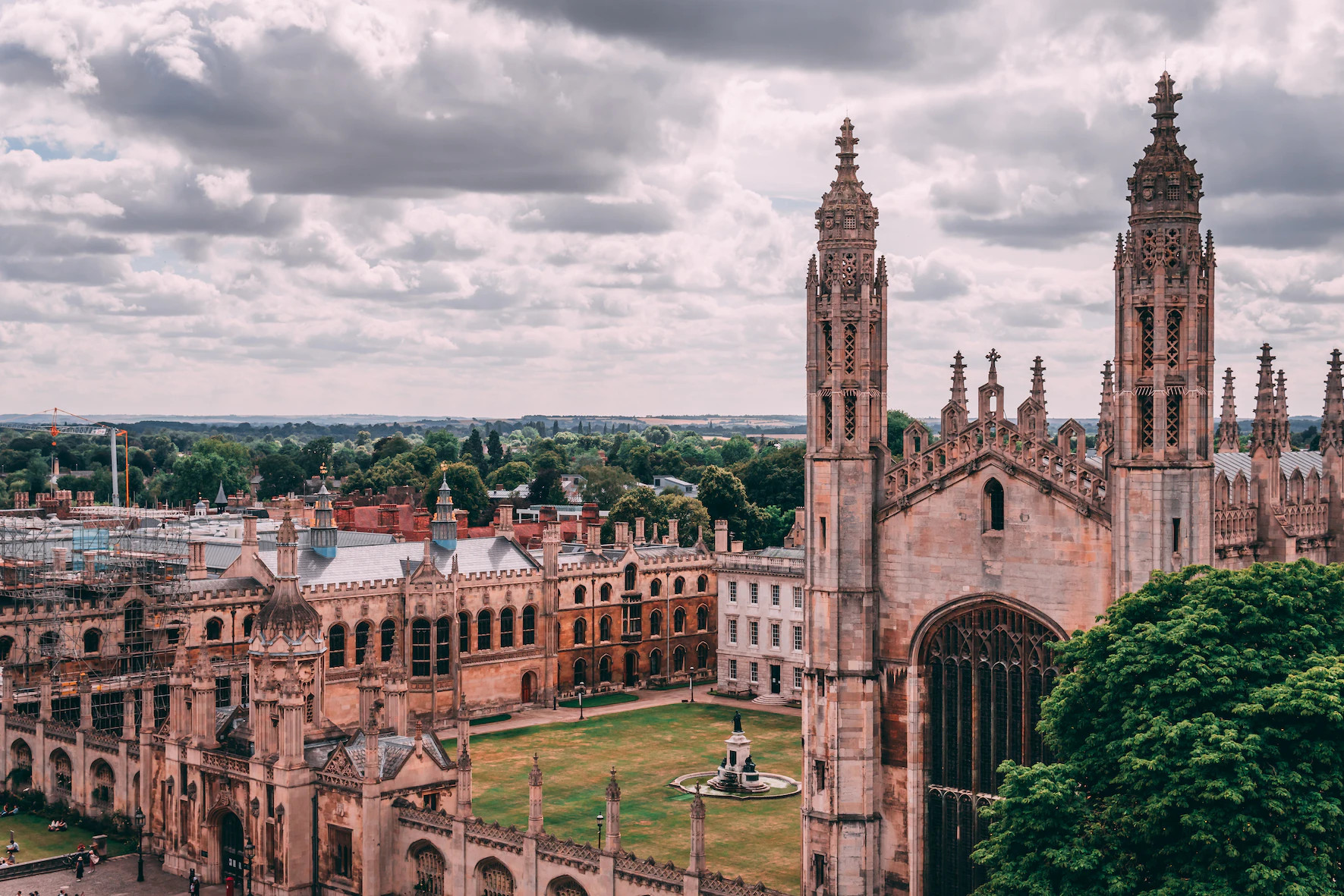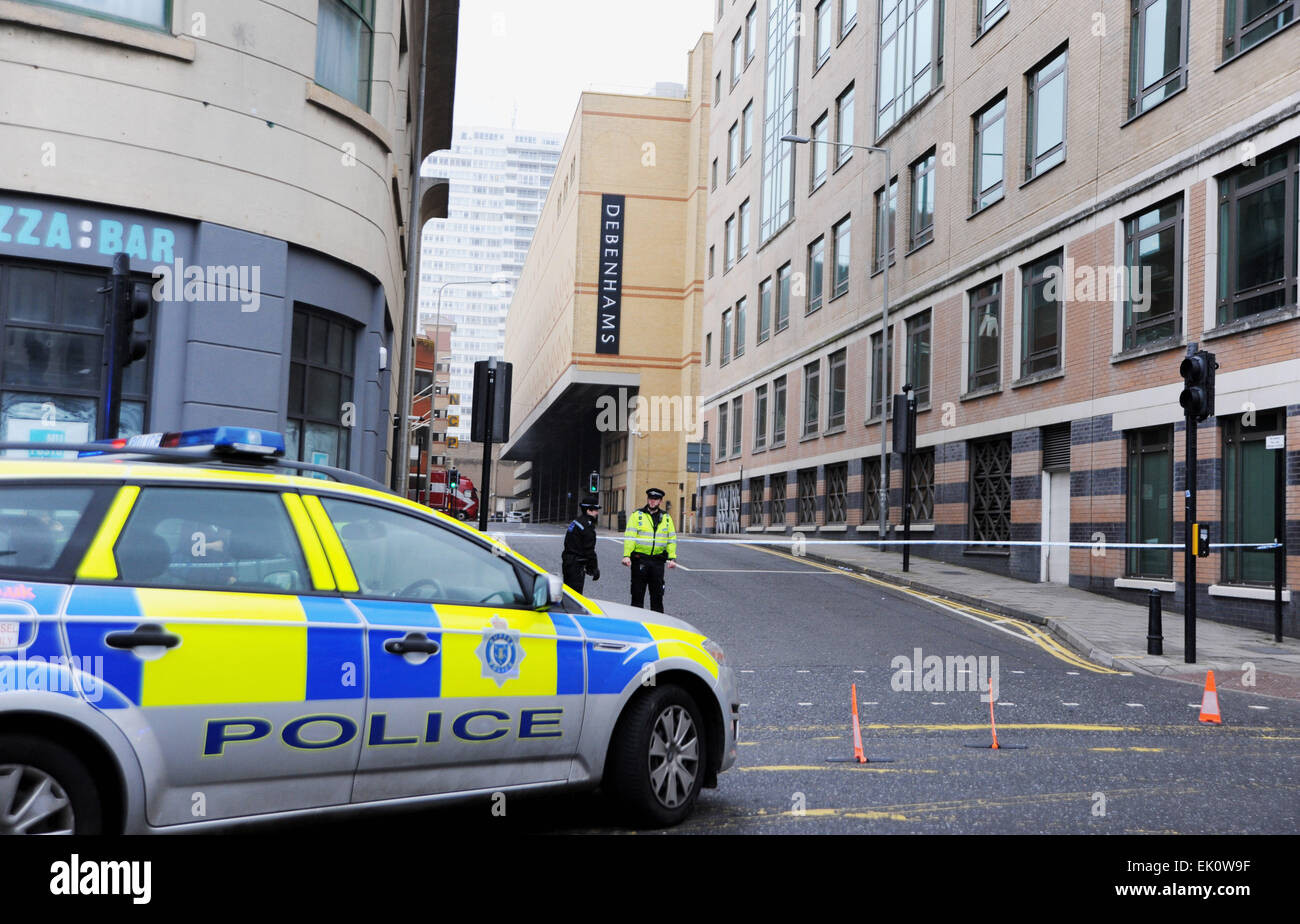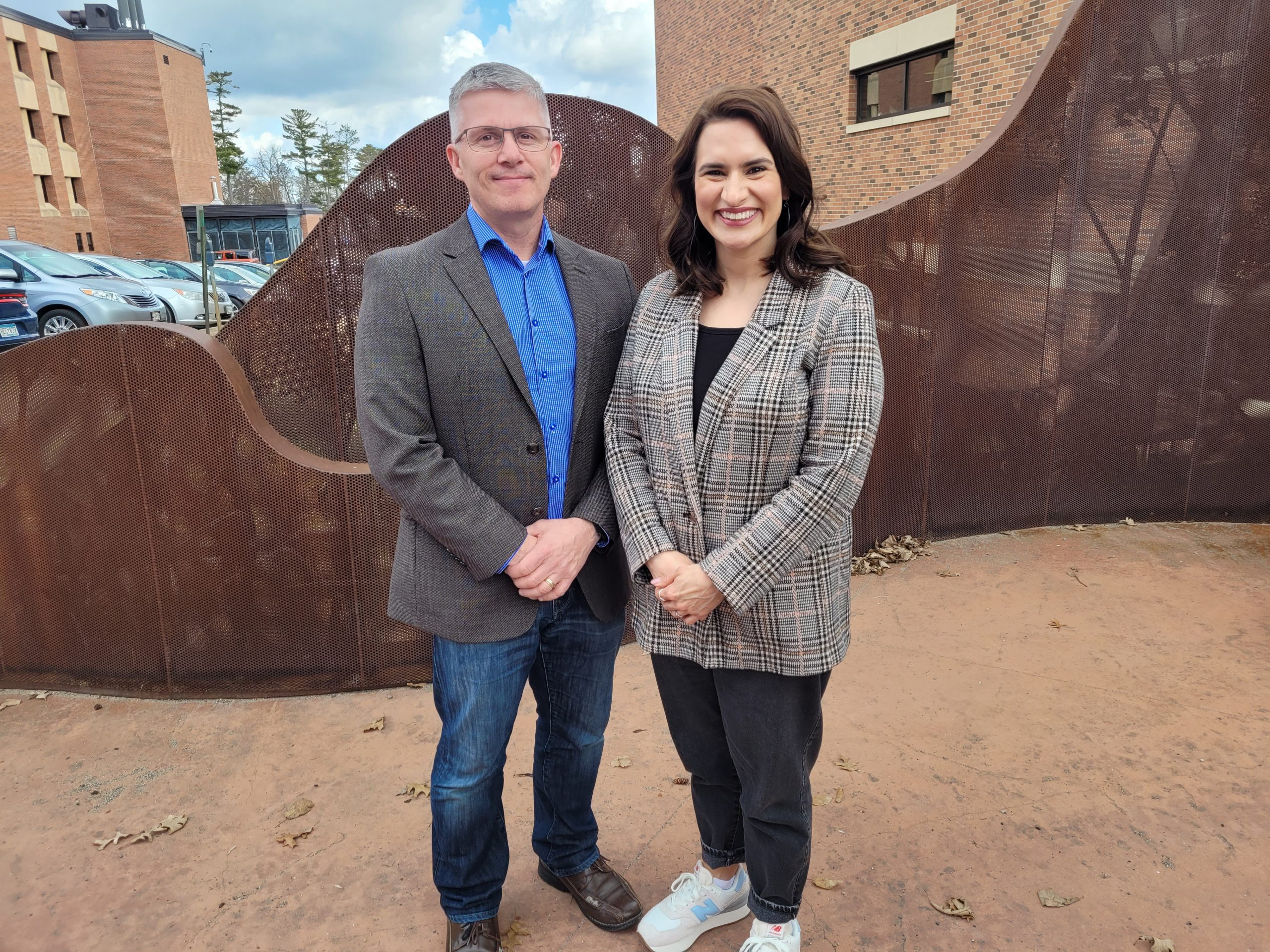Clutching his father’s ashes, Philip Stearns overlooked the cliffs of Finisterre, a Spanish town on the Atlantic Ocean considered to be the end of the earth by the Romans and Celtics. A woman wailed in Gaelic as the wind whipped the hair of onlookers and Stearns slowly scattered his father’s ashes over the ocean.
“My father had said he wanted to go ‘back’ in time before dementia, but the irony is the Gaelic people said at the end of the earth is the place where all the souls exist before they become incarnate,” Stearns said. “How poetic he said ‘back.’ ”
The Braddock Hills resident walked The Camino Frances route of the Camino de Santiago, a system of pilgrimage routes leading to the city of Santiago de Compostela in Galicia, Spain. The route is 800 km (about 497.1 miles) long and takes about five weeks to complete from St. Jean-Pied-de-Port, France. However, some pilgrims choose to complete shorter portions of 100 or 200 km.
The Camino de Santiago has existed as a Christian pilgrimage for well over 1,000 years, and Western Pennsylvanians have been making their way to the site for decades. The pilgrimage ranks among Rome and Jerusalem as one of Christendom’s great pilgrim destinations.
As a Buddhist with Irish roots, Stearns was drawn to the Celtic, pagan history of the Camino. Evidence of a pre-Christian route ends after the Christian site, Santiago de Compostela, where Christian tradition believes the apostle Saint James the Greater was buried. The pre-Christian people of the Celtic/Iberian tribes made their way to Finisterre.
Sharenda Barlar, senior lecturer of Spanish at Wheaton College and Camino de Santiago scholar, said the walk is open to anyone.
“The Camino is a Catholic pilgrimage, it’s always been one, and it will remain one,” she said. “However, the rules are you need to walk at least the last 100 km and get stamps. Other than that, it’s open. So, people of other religions can do it.”
The rubber stamps, called sellos, have a unique design that hostels, restaurants and other establishments provide. At the end of the Camino, pilgrims show their Camino Pilgrim Passport, full of stamps from each day, to verify they’ve completed the required 100 kilometers.
Barlar said there’s a variety of pilgrims, from agnostics to people doing it for exercise, to those who lost a loved one.
“You’re at a vulnerable place,” she said. “You’re open to hear, we think, as a Christian, God. It doesn’t mean God doesn’t speak to you when you’re not on the Camino, but it means that you can slow down enough to where you can listen.”
Barlar has walked the Camino de Santiago many times, and done other religious walks such as the Kerry Camino in Ireland, St. Margaret’s Way in Scotland and Canterbury in England. Barlar believes the Camino de Santiago is special.
“There’s a joyfulness about the Camino, and an openness,” she said. “I’ve found people are more open to talk about deep things.”
Belinda Held, owner of A Pilgrim’s Journey, the official tour group of the Diocese of Pittsburgh, loves having people from other faiths join her travel groups on the Camino de Santiago (the Diocese of Greensburg said it does not have a tour group).
“Many people appreciate experiencing the richness of our Catholic faith on the Camino,” she said. “You can be agnostic or of any faith and come with us. It’s a journey of faith and all are welcome.”
Her Camino de Santiago tours sell out quickly. She believes the movie “The Way” starring Martin Sheen may have contributed to increased popularity. In the movie, a father carries the ashes of his son along the Camino and forms unlikely friendships with pilgrims along the way.
“People seek purpose and meaningful travel, and the Camino offers exactly that,” said Held.
U.S. pilgrims made up the largest international group walking the Camino de Santiago in 2023. The ancient pilgrimage site welcomed more than 32,000 American visitors in a record year.
Why Western Pennsylvanians Are Walking the Camino
Stearns, vice president of Versar Global Solutions and Western Pennsylvania chapter coordinator of American Pilgrims on the Camino, heard about the Camino due to his interest in medieval history and “The Way.”
When Stearns’ father was battling dementia, Stearns told his father about his plan to walk the Camino. His father was incredulous, asking why he’d want to walk such a long way.
“I told him, in the past, people said if you walk the Camino your sins are forgiven,” Stearns said. “I said, what if I walk the Camino for your benefit? Because he was more Catholic, I thought maybe it would give him some peace.”
When Stearns’ father died, Stearns did as he promised and brought his father’s ashes with him on the Camino. As he shared his story with fellow pilgrims, they took an interest in him and offered to carry his father’s ashes and accompany Stearns to Finisterre, where he planned to scatter his father’s ashes.
“When we got beers, he was always on the table,” Stearns said. “He was one of the pilgrims.”
His strongest memory from the trek was scattering his father’s ashes in Finisterre as his Camino family was in tears, hugging one another.
Stearns had an incredible Camino experience; one many people dream of. But he insists it is important to enter a journey such as the Camino without expectations.
“For a Buddhist, preconceived ideas cause suffering,” Stearns said.
Stearns has watched many pilgrims arrive at Santiago de Compostela and feel underwhelmed because of their high expectations. He understands — when you’re walking to a destination and arrive at the destination, it’s impossible not to have an expectation.
“It’s like life,” he said. “There’s no point at the end where you get rewarded, at least that’s what I believe. Any of the normal, day-to-day things in life — we do it for the doing. The doing is the important part, not the having done.”
He believes the most meaningful part is not the city square or the cathedral or the sense of accomplishment you feel.
“It’s at the end of the day when you had blisters on your feet and thought you couldn’t walk it, but you did,” he said.
Debbie Boughner, 62, of Elizabeth Township, walked 300 miles of the Camino Frances last October. As an avid hiker, she had always known about the Camino.
“It’s a hike everybody knows,” she said. “Like if you’re a football fan, you know about the Steelers.”
As a Christian, she has traveled to Italy and Israel to walk religious routes and wanted to explore Spain.
There’s a famous part of the Camino Frances called the Cruz de Ferro. At the foot of the ‘Iron Cross,’ pilgrims have left thousands of rocks to symbolize their burdens. The rocks represent lost loved ones, regrets or sins.
As she walked, Boughner heard the stories of pilgrims and was struck by the burdens they were carrying. When one young pilgrim found out Boughner called her husband every day to share Camino stories, she was surprised. She told Boughner it must be nice to have someone to share memories of her day with.
“I asked her if she did, and she said no,” Boughner said. “Inside, my heart was breaking for her.”
Boughner walked with the young woman for three days, hoping to spread some joy and support.
Later, Boughner called her husband and told him she felt she wasn’t carrying a burden, like the young woman, and most other pilgrims.
“His comment was, ‘Maybe that’s what you were meant to learn,’” she said. Boughner walked the Camino in October, and her husband passed away in November.
“The strength I learned on the Camino helped me get through these months,” she said. “He gave me that profound statement and going forward I still don’t have that burden, even with him gone.”
Buen Camino
A typical phrase to greet other hikers on the Camino is “Buen Camino.” After phone calls with her husband, Boughner would use the phrase to say good night.
“When I spoke at his funeral I said, ‘Jim, Buen Camino,”’ Boughner said.
Ralph Andy, a retired entrepreneur, 80, of Eighty Four in Washington County, has walked five Camino routes over the last eight years — the Frances, Primitivo, Norte, Portuguese and Ingles. It has been a life-changing experience. During one of his Caminos, a professor from Louisiana told him the Camino has a way of seeping into the soul. He said around 400,000 people walk the Camino every year, and they do it for 400,000 different reasons. While he walked his first Camino out of a desire for adventure, he walked the next one desiring personal accomplishment.
“You feel a sense of personal accomplishment and when you come home all your friends look at you like you’re crazy because you walked 600 km (about 372.82 miles), but you get the stamp and the certificate and it’s a big accomplishment.”
Andy said one of his favorite memories was completing the last 100 km of the Camino Frances with his grandson, Luke Hillebrand, 21, of Washington, Pa. At one of their hostels, all the pilgrims stood up on a bench and shared why they were walking the Camino.
“I was able to say that I was walking because my grandson wanted to walk with me,” he said. “I was very proud.”
Hillebrand agrees with his grandfather’s philosophy about the “seeping into the soul thing.”
“(The Camino) is always a part of my life,” he said.
George Arroyo, 56, of North Carolina, was living in Canonsburg when he decided to walk the Camino. He watched “The Way” and bought a one-way ticket to Madrid, a train to Pamplona and a cab to St. Jean-Pied-de-Port and started the Camino the next day. Within his first few hours on the Camino, he ran into Ralph Andy.
“He ended up saving my life,” Arroyo said.
It was dark and snowing, and Arroyo, who at the time weighed 300 pounds, had nothing left in the tank. Stranded on the Camino Frances without anyone nearby, Arroyo was ready to give up. Andy spotted the pilgrim and made his way back down the mountain and told Arroyo, 24 years his junior, “If a pissant can get up this hill, so can you.”
“You don’t know the character it takes to walk back down that hill when you’re exhausted — to help a fellow pilgrim,” Arroyo said.
While Arroyo isn’t religious, he believes the Camino chooses you and has witnessed miracles and divine intervention along the trail.
“I used to call it our daily miracle,” he said. “I can recite to you so many events that happened that I was able to document.”
Arroyo insists these serendipitous moments were never coincidences. Like Stearns, Arroyo believes the secret behind a successful Camino is not having expectations. He remembers walking into Santiago de Compostela and starting to sing a song his grandfather, who was very religious, had sung.
“I couldn’t believe I’d accomplished this goal, and my grandfather was very present in my mind,” he said.
Rekindling Camino Magic at Home
When Western Pennsylvanians return from their life-changing Camino experiences, they often start planning when to go back to complete another route. In addition, some attend American Pilgrims on Camino Western Pennsylvania Chapter events.
Stearns said the Camino doesn’t end in Santiago.
“In one manner it starts in Santiago and it’s going on right now,” he said.
For one chapter event, the group walked a pilgrimage locally, starting at the Cathedral of Learning in Oakland and ending at the Mr. Rogers’ Memorial Statue on the North Shore. The group worked their way through graveyards and chapels and stopped for tapas and coffee.
“It reminded me of the Camino except on the North Side of Pittsburgh,” Stearns said.
At the end of the day, Stearns said a pilgrimage is walking with a purpose.
“It’s to see something and be moved by it,” he said.
Anna Mares is a TribLive staff writer. You can reach Anna at [email protected].
Next Steps
A Pilgrim's Journey offers many pilgrimage opportunities. The next Camino departs on Sept. 16-26, 2024. Luggage is transported and there is a support bus every five miles. Pilgrims will walk the last 100 km from Sarria to Santiago de Compostela to the tomb of St. James. The pilgrimage costs $4,499, including airfare, hotels, most meals and visits to Finisterra, Fatima, Madrid and Lisbon. For more information, contact Belinda Held of A Pilgrim's Journey at [email protected] American Pilgrims on the Camino for Camino inspiration, route overviews and packing lists. The Western Pennsylvania Chapter Camino Mentor Program pairs individuals who have questions about their upcoming Camino with a local veteran who can answer questions. Chapter coordinators Harry Clyde, Philip Stearns and Jason Bye can be reached at [email protected] considering cost, it's important to include hiking gear. Hiking shoes, hiking socks (Merino wool suggested) a backpack and rain gear are all important purchases. Accommodations along the Camino vary in price. Public hostels, or Albergues, are $8-11 per night, while private rooms in an Albergue can cost up to $22 per night, and private hotel rooms in rural cottages will cost up to $40-85 per night. Special menus along the Camino offer discounted food options for pilgrims, so many choose to eat out for meals, while others grocery shop. The average food cost per day is around $10-40.To walk the most popular leg of the Camino, the last 100 km from Sarria to Santiago de Compostela, pilgrims should fly into Madrid and take a bus or train to their starting point, Sarria. Flights from Pittsburgh to Madrid are between $500-1,000, depending on dates.


















